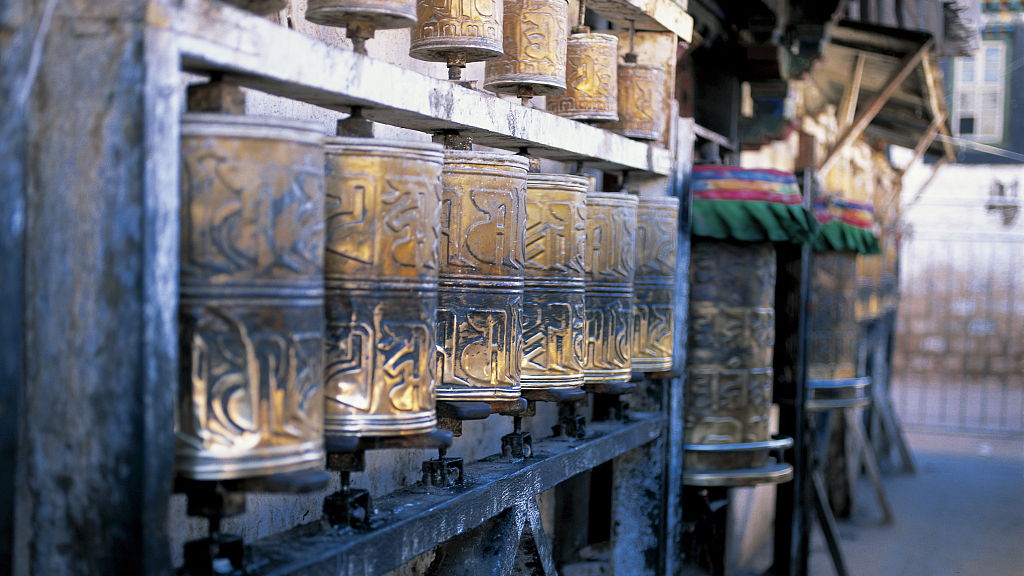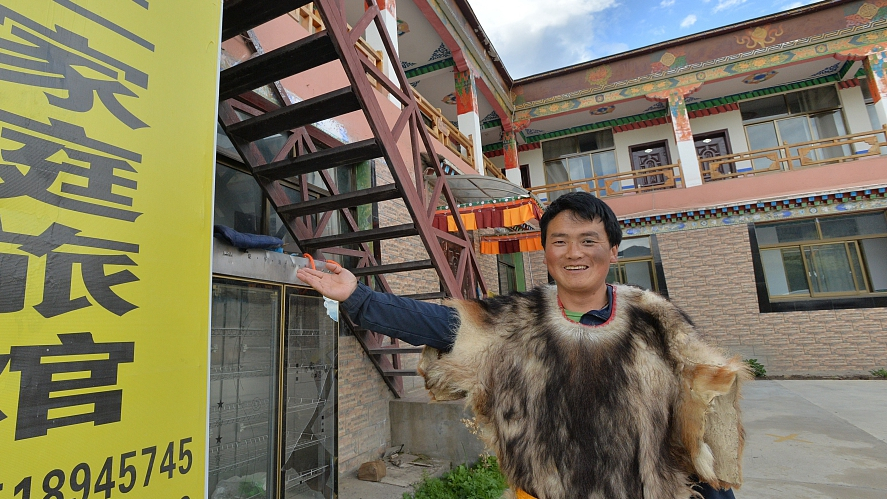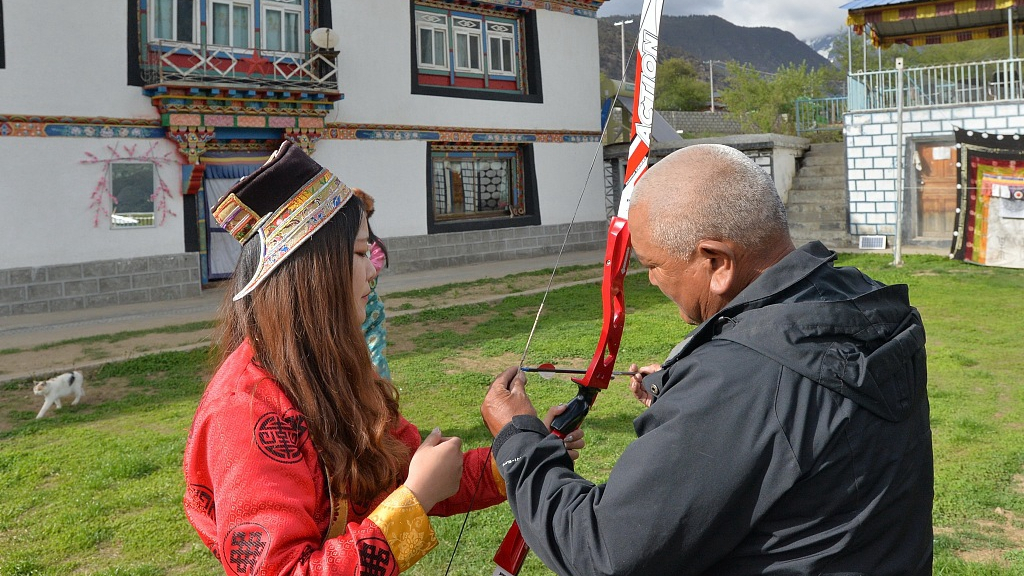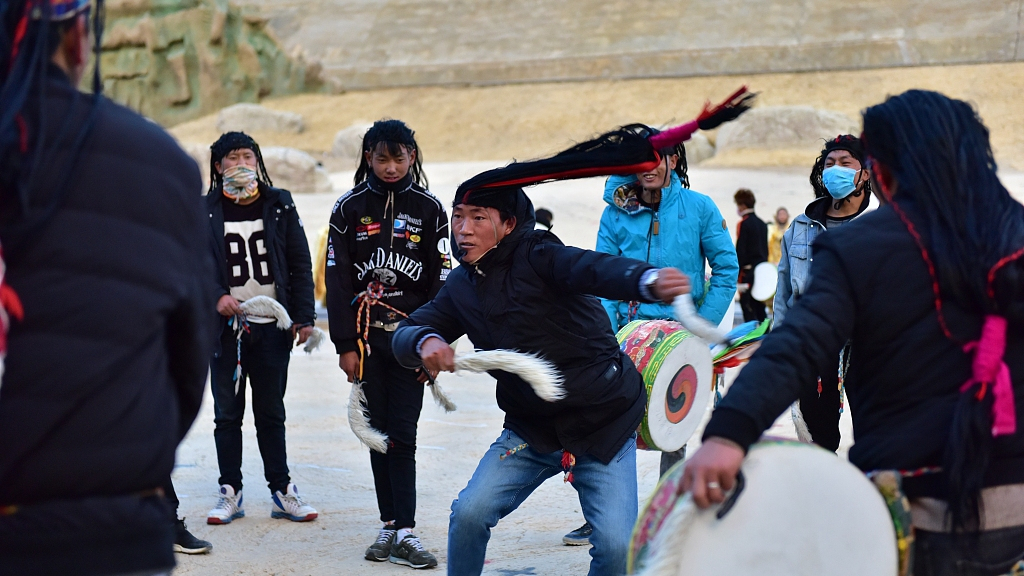

The number of tourist arrivals to southwest China's Tibet Autonomous Region reached 13.4 million during the first half of 2019, up 20.2 percent compared with that of last year, among which 118, 600 were from overseas, up 53.5 percent year-on-year. Another 13.29 million were domestic trips, a 20 percent increase compared to the same period in 2018.
Tourism has helped the Tibet Autonomous Region achieve an income of about 1.49 billion yuan during the first six months of this year, up 19.8 percent compared to the first half of 2018.
In 2019, it is expected that tourism will create jobs for more than 100,000 residents in Tibet, most of whom live on farming and animal husbandry. More than 70,000 people benefited from the development of tourism industry in 2018, and 32,000 were lifted out of poverty.

A resident of Nyingchi, Tibet Autonomous Region introduces his family inn. /VCG Photo

At the same family inn, his father teaches their guest about archery. /VCG Photo
People in several cities have been encouraged to establish family inns, especially those in popular tourist destinations. In Nyingchi, the average annual income of each of the 570 listed family inns surpassed 100,000 yuan, with some reaching 300,000 yuan, according to the regional tourism development department.
Meanwhile, an opera based on the life of a Tang Dynasty (618-907) princess has become a surprise hit in southwest China's Tibet Autonomous Region, boosting the income of locals.

A scene from the opera, "Princess Wencheng." /VCG Photo
The outdoor opera "Princess Wencheng" made its debut in the city of Lhasa in 2013 and has been an important tourist attraction alongside the Potala Palace and Jokhang Temple. Over 800 people perform in the opera; among them, farmers and herders account for 95 percent of the cast. They do their regular jobs during the day and work as extra actors at night, earning an income of 3,000 yuan to 4,000 yuan each month per person.

Local young actors rehearse for a show. /VCG Photo
The weather may get chilly, but tourists don’t have to. A series of favorable tourism policies that benefit both tourists and local tourism have been launched from 2018 to boost tourism from November to March of next year.
For detailed policies and deals, please read: Tibet offers winter deals to visitors
(Cover image: Prayer wheels at the Jokhang Temple, Lhasa, SW China's Tibet Autonomous Region. /VCG Photo)
(With input from Xinhua News Agency and China Daily)

Copyright © 2018 CGTN. Beijing ICP prepared NO.16065310-3
Copyright © 2018 CGTN. Beijing ICP prepared NO.16065310-3